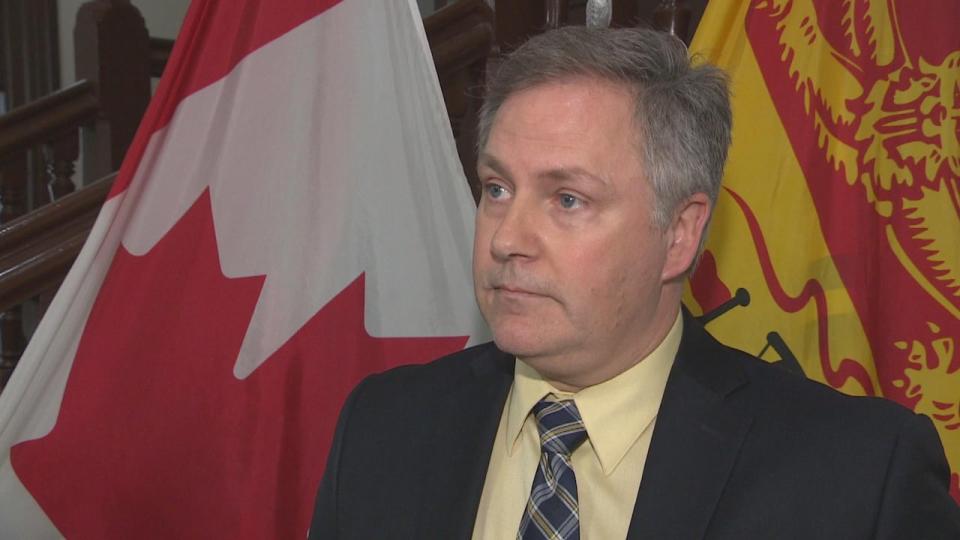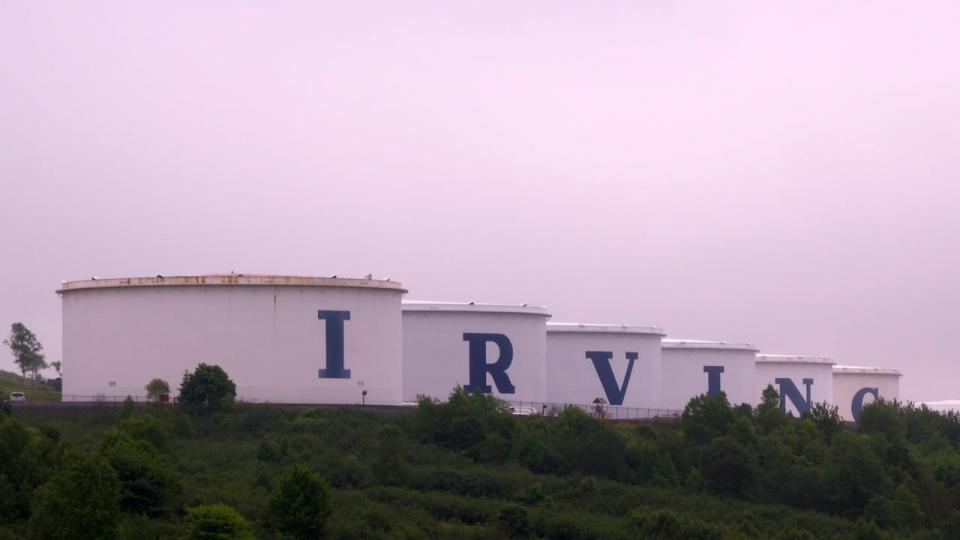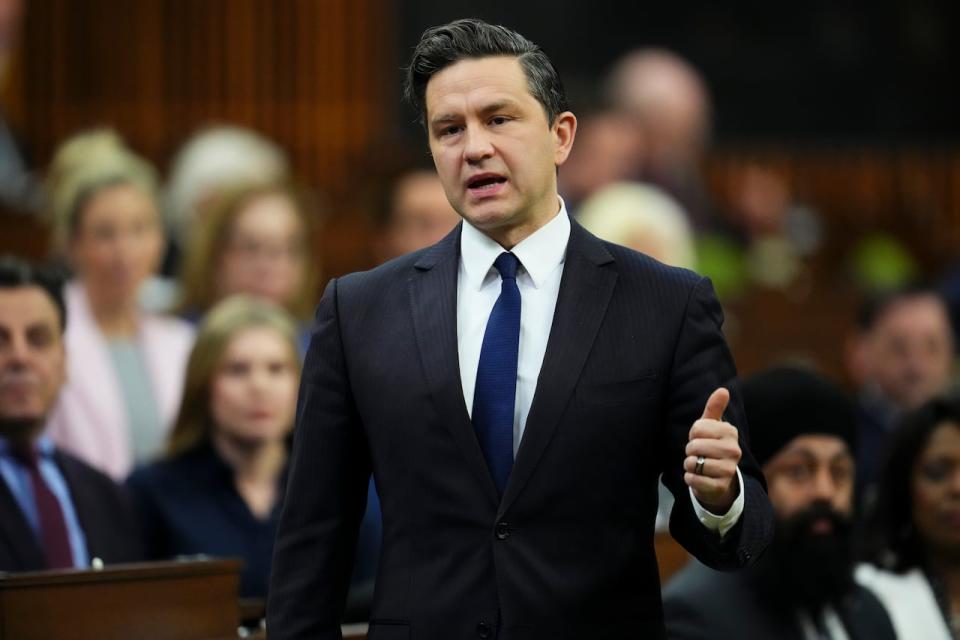Big N.B. emitters mostly exceeded greenhouse gas caps in 2021-22

New Brunswick's new carbon-price credit market is up and running, and so far it appears there are more large polluters blowing past their emissions caps than there are staying below them.
Data provided by the Department of Environment and Climate Change show the province's 15 largest emitters of greenhouse gases bought almost 10 times as many emissions credits as they earned in 2022 under the industrial carbon pricing program.
"More emitters are exceeding the cap than coming below it, and by a pretty significant margin," said Moe Qureshi, the director of climate research and policy at the Conservation Council of New Brunswick.
"However, the idea with these regulations is, now that they're having to pay more, hopefully they start making those adjustments so that they can reduce that payment."
One energy-sector watcher agrees it's too early to conclude the system isn't effective at lowering emissions.
"The reality is right now, it's very, very new," said Jonathan Alward, the vice-president of policy at the Atlantica Centre for Energy, an industry-supported research institute.
"There's still probably a bit of a feeling-out process as to how the market's going to develop here."
WATCH | 'It's very, very new': Carbon-price credit market up and running:
The province's output-based pricing system was set up to comply with the federal government's climate plan and its requirement of a price on greenhouse gas emissions.
"We'll continue to make sure that we're holding our large industrial emitters to account," Environment Minister Glen Savoie said recently in the legislature when asked about the program.
"This is one of the tools we use to do that. It was approved by the federal government. It works here, and it works in other places in Canada."
How it works
Under the system, the Higgs government established individual emissions standards for each of the 15 large emitting plants and requires them to reduce greenhouse gas levels by two per cent each year until 2030, when they must reach 82 per cent of the standard.
Emitters buy a credit for every tonne of GHGs they emit above their yearly target — either a "fund credit" issued by the provincial government at $80 per tonne, or a "performance credit."

'We'll continue to make sure that we're holding our large industrial emitters to account,' Environment Minister Glen Savoie said recently in the legislature about the program. (Radio-Canada file photo)
Plants that emit less than their cap earn one performance credit for each tonne they stay below the target, and they can sell those credits to the plants that go over.
The other option, provincially issued "fund credits," generate revenue that goes into a pool the government will use to subsidize emissions-reduction projects by the 15 large emitters.
The 2021-22 results
In 2021, the first year the system was in force, big emitters bought 143,021 "fund credits" between them, but earned only 45,547 performance credits — for a net total of 97,000 tonnes of emissions above their caps.
In 2022, large emitters bought almost 252,000 fund credits, compared to only 25,592 credits earned.
Qureshi said the upside of large emitters not earning a lot of credits so far is that it shows the system "is not too lenient."
The province won't say which individual emitters had to buy credits and which earned them, because that would "allow someone to calculate sensitive production values for participants," said Clarissa Andersen of the Department of Environment.
But the department is working on a public portal to make the system more transparent, she said.
Statistics collected by the Conservation Council from a federal database show Irving Oil's Saint John refinery reduced its emissions from 2021 to 2022, while four J.D. Irving Ltd. plants emitted more.
The AV Group's Atholville mill saw an increase while its Nackawic mill had a decrease.
Andersen said the 45,547 credits in 2021 were earned by eight of the emitters. Only one emitter sold credits — 1,661 of them.
In 2022, five emitters earned 25,592 credits. Four of them sold a total of 22,109 credits.
Performance credits will increase in value each year, so companies that earn them can opt to hold onto them rather than sell them immediately.
Internal credit trades at JDI
J.D. Irving Ltd. spokesperson Anne McInerney said the company's various plants have been generating enough credits to allow JDI to trade performance credits internally without having to buy provincial fund credits.

Statistics collected by the Conservation Council from a federal database show Irving Oil's Saint John refinery reduced its emissions from 2021 to 2022, while four J.D. Irving Ltd. plants emitted more. (Carl Mondello/Radio-Canada)
The fund credits sold by the province took in $5.7 million in 2021 and $12.6 million in 2022.
The province will use the revenue to fund up to 50 per cent of emissions-reductions projects among the big emitters.
Companies who need to buy credits may be opting for the fund credits in the hopes they'll be able to apply successfully to get some of the money back as a project subsidy, Alward said.
Getting 50 cents back on the dollar "is better than getting nothing on the dollar by purchasing from someone else who has generated a credit," Alward said.
He believes companies will eventually earn more credits but said the projects required to make that happen "don't happen overnight."
But the credit market, particularly the rising price, will make those projects increasingly cost-competitive.
"I don't see any businesses right now just saying, 'We're going to stand pat and we're just going to keep on paying a penalty,'" he said.

Conservative Leader Pierre Poilievre, seen here in the House of Commons on April 29, 2024, has promised to axe the consumer carbon tax but hasn't said whether he'll keep the industrial program in place. (Sean Kilpatrick/The Canadian Press)
Irving Oil's Saint John refinery is New Brunswick's largest source of greenhouse gas emissions and has launched a range of emissions-reduction projects.
The company did not respond to an interview request but said in its most recent sustainability report it is halfway to its goal of reducing its emissions by 30 per cent by 2030.
Poilievre's promise
One question mark is whether a future federal Conservative government would keep the pricing requirement.
Opposition Conservative Leader Pierre Poilievre has promised to axe the consumer carbon tax but hasn't said whether he'll keep the industrial program in place.
If companies can't count on the credit market functioning — and the price per tonne increasing each year — they won't have the same incentive to invest in lowering emissions.
"I'd say the lack of policy clarity can certainly put a chill on businesses making decisions," Alward said.

 Yahoo News
Yahoo News 
